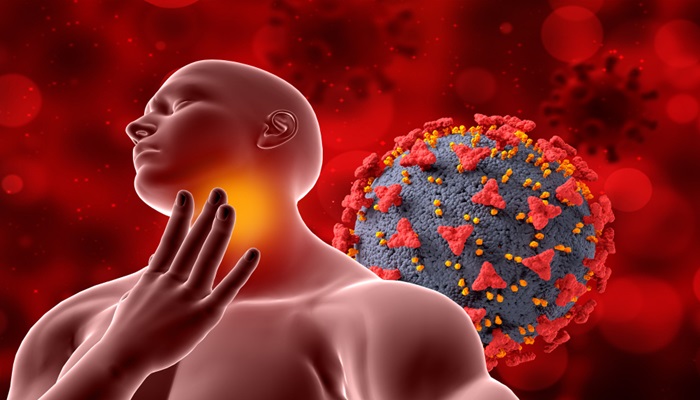Chemotherapy is one of the primary treatments for various types of cancer, including lymphoma. Lymphoma, or cancer of the lymph nodes, is a type of cancer that starts in the lymphatic system, specifically in lymphocytes (white blood cells).
Although lymphoma is less common compared to other cancers, it has a relatively high survival rate, both for Hodgkin’s lymphoma and non-Hodgkin’s lymphoma. Both types of lymphoma are known to respond very well to treatments such as chemotherapy.
How long do people with lymphoma need to undergo chemotherapy? Find out more in this article.
Contents
Chemotherapy Procedure for Lymphoma
Chemotherapy is the primary treatment for both Hodgkin’s and non-Hodgkin’s lymphoma. Usually, chemotherapy is given in cycles. One cycle can consist of several chemotherapy sessions. The doctor will then give you around 3-4 weeks for recovery before starting the next cycle.
One cycle of chemotherapy for blood cancers, including lymphoma, can take up to several months. After completing one cycle, doctors typically perform a hematology test to assess how the body responds to the chemotherapy. The results of the test will also determine whether you need additional chemotherapy cycles or not.
Chemotherapy for lymphoma can be administered in several ways:
- Intravenous: The doctor will administer chemotherapy drugs through an infusion directly into your bloodstream. The doctor may also use a chemotherapy device implanted under the skin near the collarbone.
- Injection (subcutaneous): Chemotherapy may also be given via an injection into the subcutaneous fat (under the skin).
- Oral: The doctor may prescribe chemotherapy in pill form.
- Intrathecal: For lymphoma that has spread to the spine and brain, chemotherapy can be administered through cerebrospinal fluid via an injection into the lower part of the spine.
Chemotherapy Drugs for Lymphoma
There are many combinations of drugs used in chemotherapy for lymphoma. This combination is called a chemotherapy regimen.
Hodgkin’s lymphoma and non-Hodgkin’s lymphoma have different chemotherapy regimens.
Hodgkin’s Lymphoma Chemotherapy Regimens
There are 3 chemotherapy regimens that doctors may recommend, including:
1. ABVD, which is a combination of the following drugs:
- Adriamycin (doxorubicin)
- Bleomycin
- Vinblastine
- Dacarbazine (DTIC)
2. BEACOPP, which consists of:
- Bleomycin
- Etoposide (VP-16)
- Adriamycin (doxorubicin)
- Cyclophosphamide
- Oncovin (vincristine)
- Procarbazine
- Prednisone
3. Stanford V, which consists of:
- Doxorubicin (Adriamycin)
- Mechlorethamine (nitrogen mustard)
- Vincristine
- Vinblastine
- Bleomycin
- Etoposide
- Prednisone
4. AVD, which includes:
- Doxorubicin
- Vinblastine
- Dacarbazine
Stanford V and AVD regimens may be followed by radiation, especially if the lymphoma is at an advanced stage.
Non-Hodgkin’s Lymphoma Chemotherapy Regimens
Some chemotherapy drug combinations used to treat non-Hodgkin’s lymphoma include:
1. CHOP, which consists of:
- Cyclophosphamide
- Doxorubicin (or Hydroxydaunorubicin)
- Vincristine (or Oncovin)
- Prednisone or dexamethasone
- Chlorambucil
- Carboplatin
- Cytarabine
- Etoposide
- Methotrexate
- Gemcitabine
- Oxaliplatin
This regimen is more commonly used for non-Hodgkin’s lymphoma that affects B lymphocytes.
2. CVP, which is a combination of cyclophosphamide and vincristine. Cancer patients using this regimen often also require corticosteroids as part of their chemotherapy.
In addition, most chemotherapy for non-Hodgkin’s lymphoma is typically given along with a type of drug called monoclonal antibodies, such as rituximab and brentuximab vedotin (immunotherapy).
Success Rate of Lymphoma Chemotherapy
Chemotherapy is a very effective treatment for lymphoma. However, doctors may also recommend other cancer treatments, such as radiation therapy, immunotherapy, and targeted therapy.
With the right chemotherapy and combination of treatments, the 5-year survival rate for Hodgkin’s lymphoma and non-Hodgkin’s lymphoma patients is around 80% and 73%, respectively.
Side Effects of Chemotherapy
There are several side effects of chemotherapy that may occur, including:
- Hair loss
- Mouth sores
- Extreme fatigue
- Loss of appetite
- Nausea and vomiting
- Diarrhea or constipation
- Increased susceptibility to infections
- Easy bruising and bleeding
- Dry skin
- Mood changes
- Sexual problems
Generally, most of these side effects are temporary. This means that your condition will gradually improve after completing the chemotherapy cycle.
However, some drugs used in lymphoma chemotherapy may cause long-term side effects that may appear years later, such as:
- Heart problems
- Lung problems
- Fertility issues
- Increased risk of other blood cancers, such as leukemia
However, doctors will consider all the risks and benefits before starting treatment. If the benefits outweigh the risks, they will proceed with the treatment.
You can consult with your doctor about any side effects experienced during chemotherapy. The doctor can provide treatments to help alleviate the side effects of lymphoma chemotherapy.
Consult your health issues by visiting the Mandaya Royal Blood Cancer Center. You will receive advice and medical services from our experts. Make an appointment via WhatsApp, Book Appointment, or download the Care Dokter app on Google Play and the App Store.
Patient Experience with Stage 4 Lymphoma Cancer at Mandaya Royal Cancer & Radiotherapy Center



